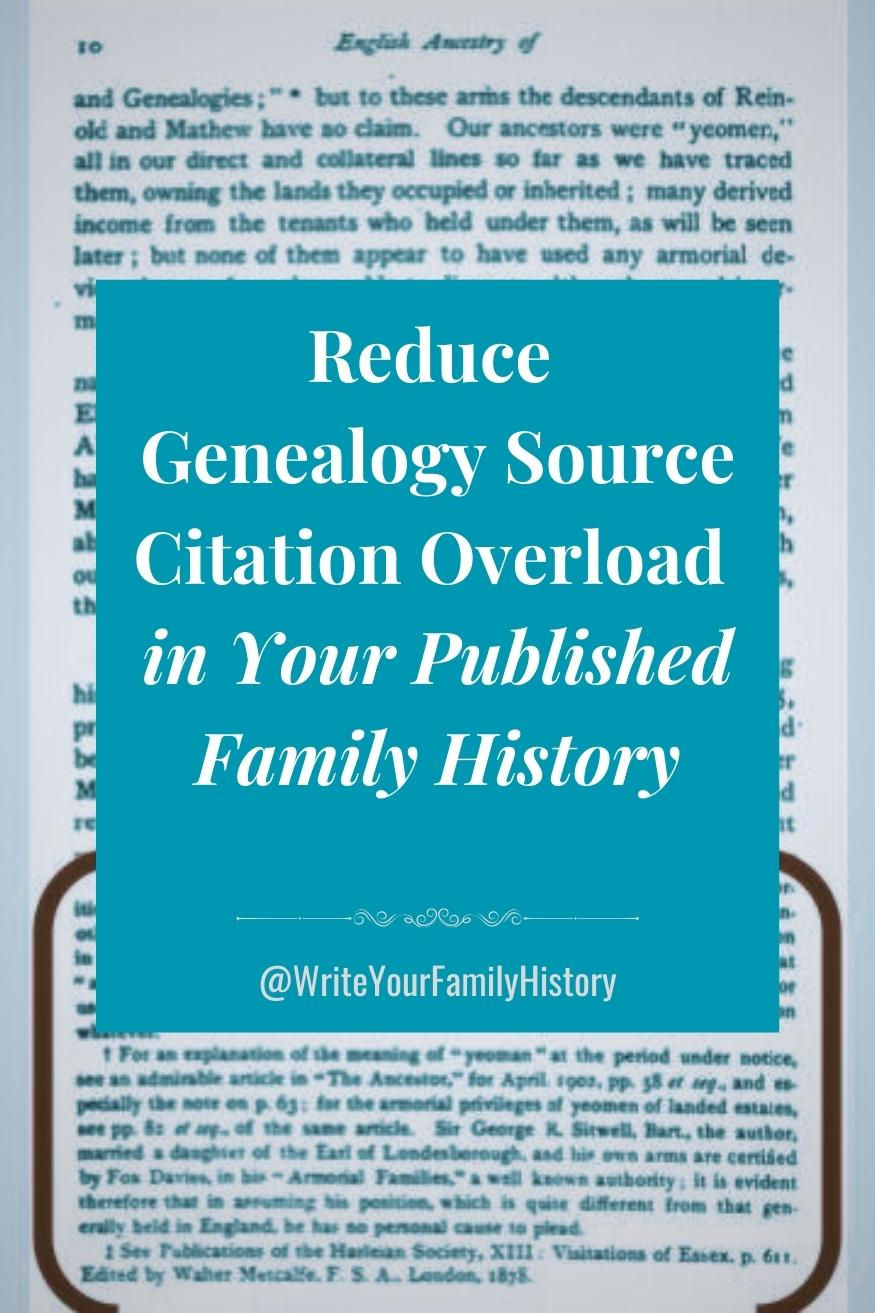Struggling with Genealogy Source Citation Overload in Your Published Family History? Try This
- Devon Noel Lee
- Oct 17, 2024
- 3 min read
Updated: Nov 4, 2024
Have you ever noticed how much space source citations take up in your genealogy research reports or family history books? You know they’re essential for proving your claims, but the endless lines of citations can clutter your beautiful narrative. What if there was a way to reduce that clutter without compromising the integrity of your references? Would you want to know how?
If you’re tired of bulky citations, stick around. I’ve got some easy strategies that will make your family history project look cleaner and more professional.
Why First and Subsequent Citations Matter
The secret to streamlining your citations lies in using first citations and subsequent citations effectively. This method not only saves space but also enhances the readability of your family history book.
Let’s break it down using a common source I’ve referenced in my own genealogy work: History of Franklin County by William T. Martin.
When you first mention this book, your citation might look something like this:
First Source Citation: Martin, William T., History of Franklin County: A Collection of Reminiscences of the Early Settlement of the County (Columbus, Ohio: Follett, Foster & Company, 1858), 14.
Notice that this first citation includes all the key details about the source: the author, title, publication year, and page number. This allows your reader to find the source and verify the information.
But what happens when you need to reference this source again on a different page?
↪️ Do you want to write a family history book?
Grab your copy of this FREE Writing Guide:
Shortening Subsequent Genealogy Source Citations
Here’s where you save space. Instead of repeating the entire citation, you use a subsequent citation—a shortened version that looks cleaner and takes up less room:
Subsequent Citation: Martin, History of Franklin County, 39.
By trimming down the source citation to the essentials (author, title, and page number), you reduce clutter while still providing the necessary information.
Look at this example, where I show the first and subsequent citations.
As you can see, using subsequent citations can drastically reduce the amount of space citations take up.
Cross-Referencing for Even More Breathing Room
Another space-saving tip is to cross-reference your citations. This works especially well in chapter endnotes. When referencing the same source multiple times, you can link back to the earlier citation instead of repeating it in full.
For example, if History of Franklin County appears in your notes as footnote #1, you can refer to it later as:
See note #1.
This method not only saves space but also makes editing a breeze. If you ever need to change or update a citation, you only have to adjust the first instance instead of hunting down multiple entries.
Take a look at how much cleaner these citations appear above.
Why Clean Citations Are More Than Just Aesthetic
Using subsequent citations and cross-references doesn’t just make your genealogy book look better—it also makes it easier to edit and update. Imagine you discover new information after publishing or need to correct a mistake. With these strategies, you only have to update the first citation, and the rest will follow suit.
Plus, reducing unnecessary citation bulk means fewer pages to print, which can save you money if you plan to self-publish.
If you want to see these strategies in action, check out my video on the Family History Fanatics channel, where I dive deeper into how to make your citations cleaner and more professional-looking.
Check out my full video to see the entire conversation about first and subsequent citations.
Let’s Continue the Conversation
How do you handle repeated citations in your genealogy work? There’s actually quite a bit of debate in the genealogy world about the “right” way to format citations, and I’d love to hear your approach!
And if you want to dive deeper into this topic, be sure to watch the Write Your Family History channel. See you next time!

.png)




